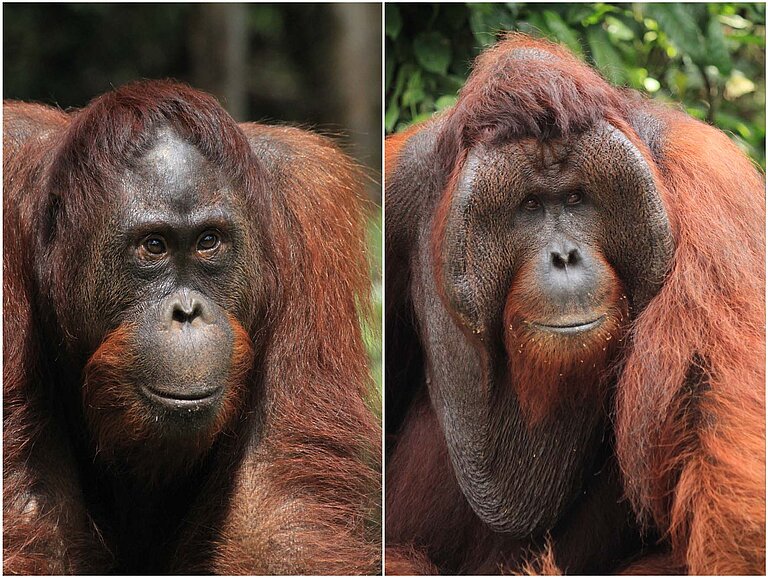Dominant, cheek-padded orang-utan males are significantly more successful at fathering offspring – except in times of rank instability
Unlike most mammals, male orang-utans express one of two distinct morphological forms: some develop large “cheek pads” on their faces; others do not. A team of researchers led by Graham L. Banes and Linda Vigilant of the Max Planck Institute for Evolutionary Anthropology in Leipzig, Germany, studied the reproductive success of Kusasi, the former dominant male at Camp Leakey in Indonesia’s Tanjung Puting National Park and compared it with that of socially subordinate, non-cheek-padded males from the same area. To this aim the researchers collected faecal samples and performed paternity testing. They found that, during his decade as “king” of the jungle, Kusasi fathered significantly more offspring than any other male. Only during periods of rank instability, in the beginning and at the end of Kusasi’s dominance, did other males succeed in fathering offspring. The findings are published in the journal Behavioral Ecology and Sociobiology.
